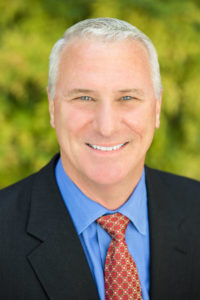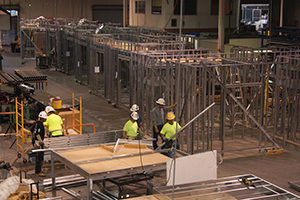Sacramento Business Journal reporter Ben Van der Meer sat down this spring with Kitchell CEM President Russ Fox for one of the publication’s executive profiles. Below is the original article.
As president of one of Sacramento’s leading public-sector construction companies, Russ Fox said he’s got a special place in his heart for construction projects at community colleges.
His own experience attending community college is the reason why. After graduating high school in Willows, Fox took classes at Shasta College in Redding. “I didn’t have a clue what I was going to do when I grew up,” he said. “Community colleges helped me out.”
During school breaks, he worked on a house remodeling project. A superintendent told him that if he got a degree in construction management, he could do anything in the field.
Fox finished his undergraduate requirements at Shasta and transferred to the highly regarded construction management program at California State University Chico. That paved the way for everything that’s happened in his career since.
Fox’s first job after college was in Stockton, building offshore oil platforms that eventually would go off the coast of Southern California. Fox said the work wasn’t glorious but, after growing up poor, he was happy to have it.
A year in, however, the company wanted to transfer him to El Centro in Southern California. He was not enamored with the idea of moving to the desert. Instead, in 1986 Fox got a job with Kitchell based on the recommendation of a former colleague who’d joined the company.
Fox’s first job with Kitchell was working on state correctional prison projects when California was in the midst of a prison building boom in the 1980s. He steadily moved up the ranks, first managing projects in the field, then operations, then becoming the vice president for Kitchell CEM’s western region. Kitchell CEM is one of five separate but related companies with the Kitchell name and is based in Sacramento.
In 2008, Fox became Kitchell CEM president. During his entire time at Kitchell, he only had one, fleeting desire to look into a position with another company, he said.
“It’s an employee-owned company, and I’ve never been asked to do something that was against my core values,” he said. “And when I make a business decision, I worry about how it affects the retirement of everyone down to the receptionist.”

